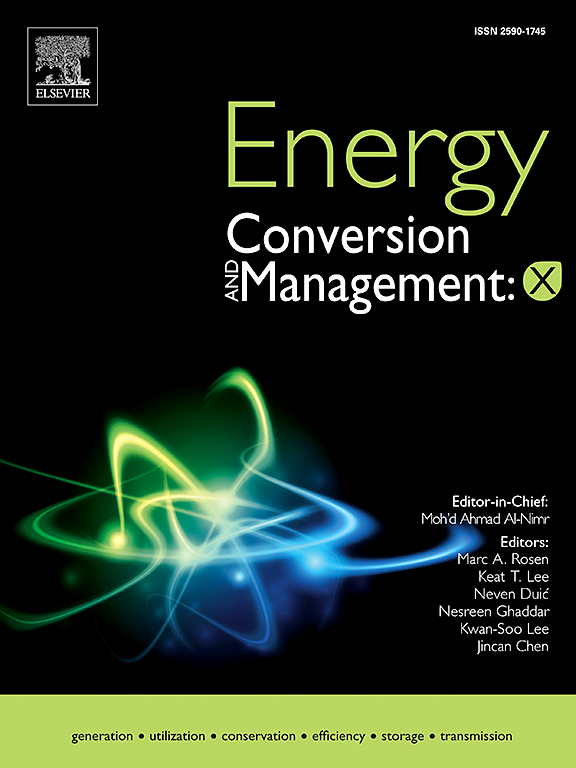Exploring a new approach to ancient Qanat techniques using earth-air and water-air heat exchangers for efficient natural cooling
IF 10.9
1区 工程技术
Q1 ENERGY & FUELS
引用次数: 0
Abstract
The growing demand for sustainable climate adaptation in cities has intensified interest in passive, energy-efficient cooling systems, especially for semi-open public spaces where conventional air-conditioning solutions are often inefficient. This study proposes a novel reinterpretation of the Persian Qanat system, integrating it with contemporary engineering through Earth-Air and Water-Air Heat Exchangers to create nature-based infrastructure for urban cooling. The experimental set-up is installed at full scale in a public space and includes buried ducts interacting with the soil and submerged ducts connected to a water reservoir named Qanat. The system operates in two phases: daytime cooling by passive heat exchange and nighttime regeneration using evaporative and radiative cooling to restore thermal capacity. Performance was assessed through continuous environmental monitoring, including air, soil and water temperatures, and cooling energy calculations. The results indicate air temperature reductions of up to 8 °C between the inlet and outlet of the ducts during the hottest hours of the day. At night, evaporative regeneration reduced the soil temperature to 23 °C, improving the cooling potential for the following day. The energy analysis showed daily cooling values reaching up to 19 kWh. These findings confirm the potential of the system as a scalable and sustainable climate solution, enhancing thermal comfort in urban environments while recovering ancestral techniques adapted through modern design.

探索利用土-空气和水-空气热交换器进行高效自然冷却的古坎儿井技术的新方法
随着城市对可持续气候适应需求的不断增长,人们对被动式节能冷却系统的兴趣日益浓厚,特别是在半开放式公共空间,传统的空调解决方案往往效率低下。本研究提出了对波斯坎儿井系统的一种新颖的重新诠释,通过地球-空气和水-空气热交换器将其与当代工程相结合,为城市制冷创造了基于自然的基础设施。实验装置以全尺寸安装在公共空间中,包括与土壤相互作用的地下管道和连接到名为坎儿井的水库的水下管道。该系统分两个阶段运行:白天通过被动热交换进行冷却,夜间使用蒸发和辐射冷却来恢复热容量。通过持续的环境监测来评估性能,包括空气、土壤和水温,以及冷却能量计算。结果表明,在一天中最热的时候,管道的入口和出口之间的空气温度降低了8°C。在夜间,蒸发再生将土壤温度降低到23°C,提高了第二天的冷却潜力。能量分析显示,每日冷却值高达19千瓦时。这些发现证实了该系统作为可扩展和可持续的气候解决方案的潜力,增强了城市环境的热舒适性,同时通过现代设计恢复了古老的技术。
本文章由计算机程序翻译,如有差异,请以英文原文为准。
求助全文
约1分钟内获得全文
求助全文
来源期刊

Energy Conversion and Management
工程技术-力学
CiteScore
19.00
自引率
11.50%
发文量
1304
审稿时长
17 days
期刊介绍:
The journal Energy Conversion and Management provides a forum for publishing original contributions and comprehensive technical review articles of interdisciplinary and original research on all important energy topics.
The topics considered include energy generation, utilization, conversion, storage, transmission, conservation, management and sustainability. These topics typically involve various types of energy such as mechanical, thermal, nuclear, chemical, electromagnetic, magnetic and electric. These energy types cover all known energy resources, including renewable resources (e.g., solar, bio, hydro, wind, geothermal and ocean energy), fossil fuels and nuclear resources.
 求助内容:
求助内容: 应助结果提醒方式:
应助结果提醒方式:


